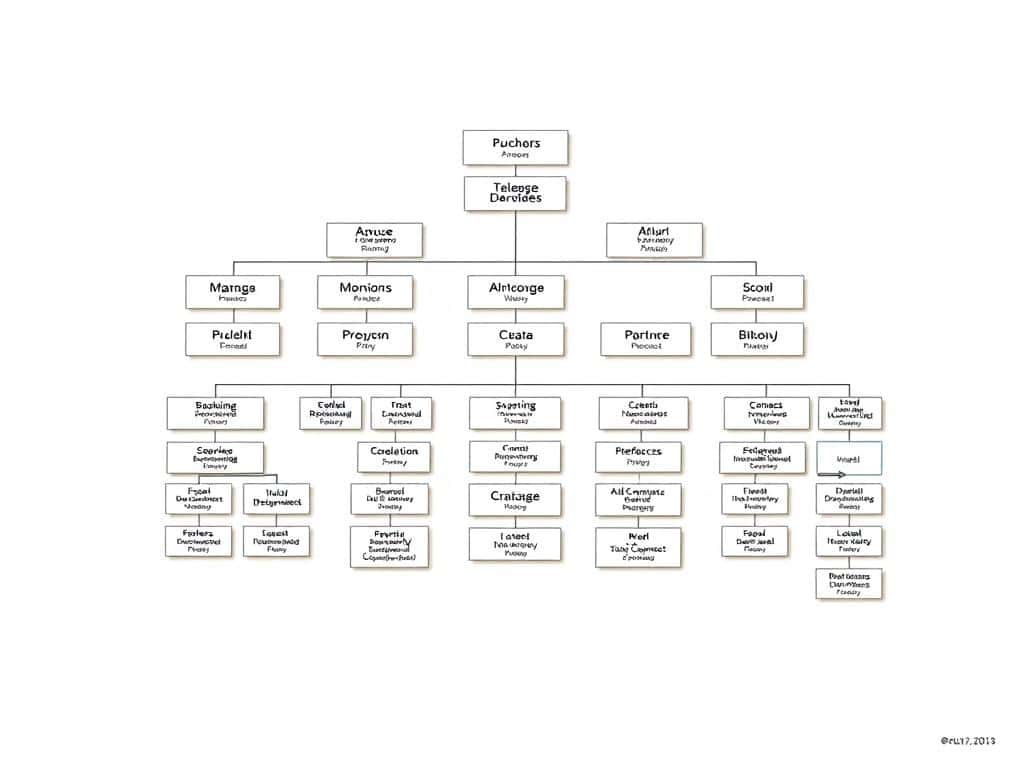When I first started my small business, things got really messy when we grew. With more projects and team members, we didn’t have a clear plan. This made it hard to know who did what, and talking to each other was tough.
It wasn’t until we sorted out our structure that things changed. We learned how important it was to have a clear plan. This helped us work better together and reach our goals.
Key Takeaways
- Organizational structure is vital for defining roles and responsibilities.
- A clear company hierarchy improves communication and decision-making.
- Different business needs require different organizational designs.
- An effective structure promotes overall operational efficiency.
- Consider size, goals, and workflows when choosing your structure.
- Avoid common pitfalls by assessing your unique circumstances.
Understanding Organizational Structure
The concept of organizational structure is key to any successful business. It shows how tasks are split, managed, and overseen. A clear structure helps in communication and making decisions, making the business run better.
Definition and Importance
Organizational structure is the way roles and duties are set up in a company. It’s vital because it makes it clear who reports to whom and how information moves. A good structure helps operations run smoothly and makes sure everyone knows their job.
Without a clear structure, teams can get confused. This can make the business less efficient.
Benefits of a Clear Structure
A clear structure has many benefits. It makes people accountable for their work and what’s expected of them. It also helps find out if there are skills missing that could hold things back.
It makes communication better, helping teams work together. This makes the business more efficient at all levels.
Types of Organizational Structures
Exploring organizational structures reveals how they shape team dynamics and efficiency. Each structure has its strengths and weaknesses, affecting specialization and productivity. Knowing these types helps tailor a structure that meets a business’s needs.
Functional Structure
The functional structure groups employees by their skills. It focuses on areas like marketing, finance, and operations. This model boosts team efficiency by streamlining decision-making.
Yet, it may hinder communication between departments. This can limit collaboration.
Divisional Structure
The divisional structure divides the organization into units based on products, regions, or markets. It empowers division leaders to make decisions quickly. This setup encourages innovation for specific customers.
But, it can lead to resource duplication, causing inefficiencies.
Matrix Structure
The matrix structure combines functional and divisional elements. It allows teams to share resources, promoting diverse skills in projects. This structure preserves specialization while improving collaboration.
Managing its complexity requires strong leadership to balance priorities and maintain efficiency.
Flat and Network Structures
Flat structures reduce management layers for faster communication and decision-making. They empower employees and boost morale. Specialization within teams enhances overall efficiency.
Network structures rely on external partners for flexibility and specialized skills. The challenge is maintaining quality and coordination across entities.

Choosing the Right Organizational Structure
When picking an organizational structure, it’s key to know the business needs first. Every company has its own goals and hurdles. Understanding these helps improve how well the organization works.
Whether it’s a new startup or a big company, fitting the structure to its needs boosts performance.
Assessing Business Needs
Getting to know the core needs of a business is the first step. It’s important to look at the company’s size, how it works, and what the market wants. This helps shape a structure that fits well with the business goals.
Having a structure that matches the business goals makes the company run smoothly. It also keeps it ready to change with the market.
Factors to Consider
There are many things to think about when choosing a structure. Leadership style is one, as it affects how teams work together. The type of products or services also matters for team design.
Rules and where the company operates are also key. And don’t forget about the latest trends in the industry. They can give a company an edge.
Avoiding Common Pitfalls
It’s important to watch out for common mistakes. Rushing into a decision without checking everything can lead to problems. Being too rigid can also hold a company back from changing with the market.
Choosing a structure that can grow with the company is the best way to ensure success in the long run.
Conclusion
In today’s world, picking the right organizational structure is key to success. I’ve learned how different structures can help meet business goals and improve team work. Knowing the options helps leaders find the best one for their needs.
Looking at what a company needs and important factors helps create effective teams. It’s vital to avoid mistakes that can slow growth and teamwork. This ensures a structure that encourages innovation and lasting success.
The right structure does more than just help with daily tasks. It also sets the stage for future wins. My exploration has shown me that the right structure is the foundation for a business to grow and change with the times.




